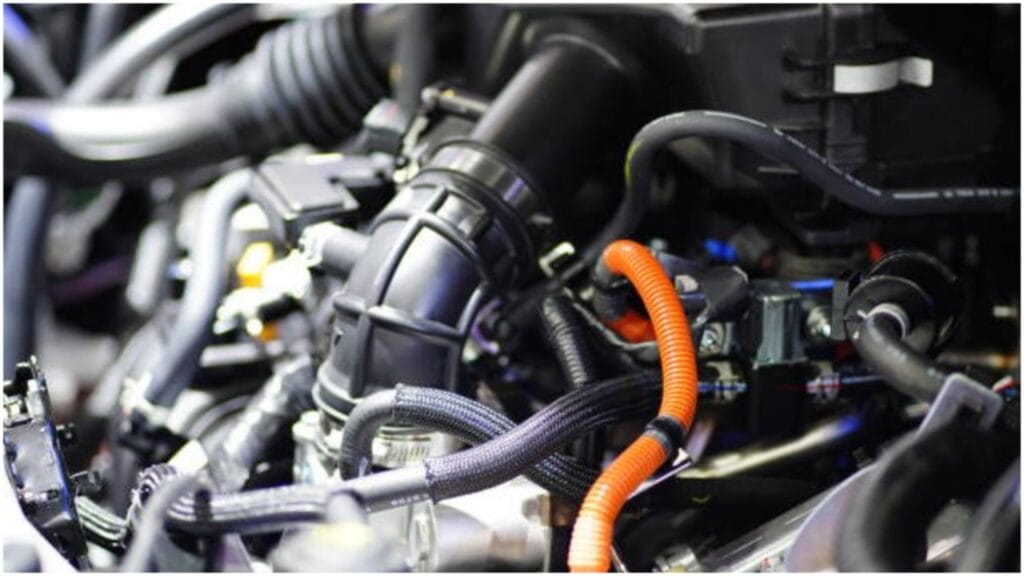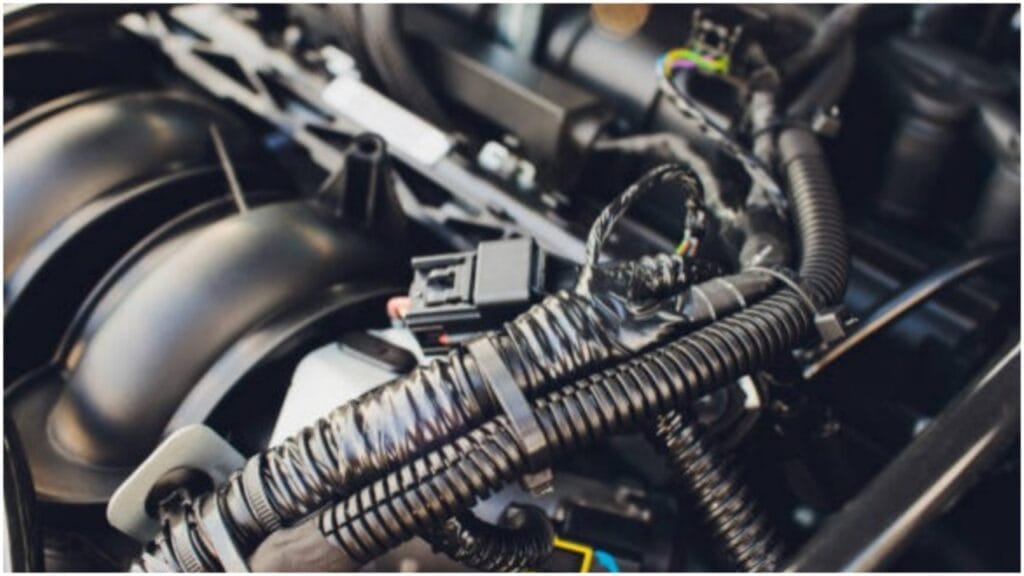Brakes should feel smooth and easy, right? But sometimes, they don’t. That stiff, unresponsive pedal? Yeah, that’s a sign your brake booster isn’t getting enough vacuum. I’ve been there, and trust me, it’s not fun. The good news? There’s a way to fix it, and it’s not as complicated as it sounds.
If you want to increase brake booster vacuum, the best way is to install an electric vacuum pump. This little device keeps vacuum levels steady, so your brakes work like they should—even if your engine isn’t making enough vacuum on its own. You can also try using a vacuum reservoir, fixing leaks, or adjusting the idle speed to help boost vacuum.
But here’s the thing—before fixing anything, you gotta understand why this happens. What’s stealing your vacuum? And which fix is actually right for your car? Stick with me, and I’ll break it all down in the simplest way possible.
How to Measure Vacuum
Measuring brake booster vacuum is actually pretty simple, and it tells you right away if there’s a problem. You’ll need a vacuum gauge, which you can find at any auto parts store.
First, locate the vacuum hose that connects the brake booster to the engine. It’s usually a thick rubber hose running from the intake manifold to the round, drum-like booster on the firewall. Carefully remove the hose and attach your gauge to the engine side of the hose while keeping the other end sealed.
Now, start the engine and let it idle. Watch the gauge—it should read between 16–22 inches of mercury (inHg) for most engines. If the vacuum is below 16 inHg, your booster might not be getting enough vacuum to function properly. If the needle bounces or drops suddenly when you press the brake pedal, that could mean a vacuum leak or a failing booster.
Also, try revving the engine slightly. In most cases, vacuum should drop momentarily but then return to normal. If it doesn’t, there might be a deeper issue, like a worn-out check valve or an engine problem affecting vacuum production.
How Much Vacuum Does a Brake Booster Need?

From my own experience, I can tell you that your brake booster needs a solid amount of vacuum to make braking smooth and easy. Usually, it needs around 16 to 18 inches of mercury (inHg) to work right. When it drops below that, like to 12 inHg, you’ll feel it. The pedal gets stiff, and suddenly, you’re putting in way more effort just to stop.
But if it falls to 10 inHg or less, yikes, your brake booster isn’t doing its job anymore. That means more leg work for you. And we all know how scary that is when you’re trying to stop fast.
Trust me, keeping an eye on your vacuum levels makes a huge difference. Once everything’s right, you’ll notice the brakes feel smooth again, like they’re doing the work for you. Just gotta make sure that the vacuum stays where it needs to be!
Common Signs of Low Brake Booster Vacuum
I’ve felt the struggle when my brake booster wasn’t working right. You know that feeling when you press the brake pedal, and it’s like pushing on a wall? That’s a clear sign something’s off with the vacuum. The brake booster should be helping, but when it’s not, you’re on your own.
Then there’s the scary part—longer stopping distances. You push the pedal, and it takes what feels like forever to stop. I’ve had that moment when I pressed the brakes and the car didn’t slow down fast enough. That’s because the booster isn’t doing its job. The brake system should be helping you stop with little effort, but when the vacuum’s low, it’s all on you.
Sometimes, you might even hear a weird hissing sound when you press the brake pedal. I’ve had that happen too. It sounds like air leaking out somewhere, and it usually means there’s a problem with the vacuum system.
And if the car stalls when you brake? That’s a big red flag that you’ve got a vacuum issue. Trust me, if you’re noticing any of these signs, it’s time to take a closer look at your brake booster. You don’t want to be stuck with brakes that don’t work when you need them most.
Best Fixes for Low Brake Booster Vacuum
If you’re facing a low brake booster vacuum, don’t panic—it’s fixable. I’ve been there, and I found a few fixes that made a difference. Let me walk you through what worked for me.
First, one of the best things I did was install an electric vacuum pump. Now, I know that might sound fancy, but trust me, it’s super helpful. The pump provides your brake booster with a little vacuum source, so even if your engine isn’t working properly, the pump steps in to keep everything running smoothly. It’s like having a backup plan for your brakes, and honestly, I’d recommend it if you’re having issues.
Another trick that worked for me was adding a vacuum reservoir. Think of it like a spare tank of vacuum. It stores extra vacuum, and when your engine can’t make enough (like when you’re slowing down too quickly), the reservoir kicks in to help. It’s a simple fix, but it works wonders, especially if you don’t want to mess around with a pump just yet.
Now, here’s something I didn’t always think about—checking for leaks. Even the tiniest leak can mess with your brake booster’s vacuum. I’ve found that making sure all the hoses and check valves are nice and tight can solve a lot of issues. It’s easy to overlook, but it’s worth checking because a leak can be the culprit.
And finally, there’s one more simple fix that’s easy to overlook—adjusting the engine’s idle speed. Sometimes, just turning the idle up a bit is enough to help the engine make a bit more vacuum. I tried it, and it made a difference for me. It’s a quick, no-fuss way to get things back on track.
So, there you go—those fixes helped me out when my brake booster wasn’t getting enough vacuum. If you’re in the same boat, give these a try. You might be surprised at how easy it can be to get things back to normal!
Your Engine is Just One Big Air Pump

Here’s the thing—your engine is pretty much just one big air pump. Sounds a bit weird, right? But it’s true. When you hit the gas, your engine pulls in air, mixes it with fuel, and then burns it to make power. So, all that air flowing in and out? It’s also creating vacuum pressure along the way.
And here’s where it gets interesting. That vacuum pressure is what helps power things like your brake booster, which makes your brakes feel easier to press. Without enough vacuum, your brakes might feel like you’re pressing against a wall. I’ve had that happen, and it’s not fun.
But don’t worry, fixing it is easier than it sounds. It’s all about making sure the air is getting to the right places—if your engine’s not making enough vacuum, it’s like the pump isn’t doing its job. All you have to do is give it a little boost, like adding a vacuum pump or checking for leaks. Simple fixes that make a world of difference!
FAQ’s
Vacuum pump not pulling full vacuum
If your vacuum pump isn’t pulling a full vacuum, it can be super frustrating. I’ve been there myself, and it’s like the brakes just aren’t working like they should. It’s almost like having a helper who’s not pulling their weight! But don’t worry, there are a few things you can check to get that pump working right again.
First off, take a look at the pump itself. Sometimes, they just wear out after a while. If it’s old, it might not be able to pull the vacuum it used to. If that’s the case, you might need to replace it. I’ve had to do that a couple of times, and it makes a difference!
Next, check the hose that connects the pump to the brake booster. It’s easy for a hose to get loose or cracked over time. Even a tiny gap can let the vacuum slip away, and that means your pump can’t do its job. I’ve had that happen before, and all it took was tightening the hose or swapping it out for a new one.
Another thing I learned is to check the power. If your pump isn’t getting enough power, it just won’t work right. So, make sure the wires and connections are all good. If the voltage is low, the pump won’t pull a full vacuum. I’ve had that problem before, and once I fixed the wiring, everything was back to normal.
Finally, check for leaks. I know it sounds obvious, but even the tiniest leak can mess up the whole system. Look around for any cracks or holes in the hoses or the check valve. Fixing those little leaks can make a big difference. I’ve done it, and my vacuum pump was back to pulling a full vacuum in no time.
So yeah, if your vacuum pump isn’t pulling the full vacuum, it’s usually something simple. Just check the pump, hoses, power, and leaks, and you’ll be good to go!
Vacuum pump failure aviation
A vacuum pump failure in aviation isn’t just an inconvenience; it’s a serious issue that demands immediate attention. Vacuum pumps are critical in smaller aircraft, particularly those relying on the vacuum system to power essential flight instruments such as the artificial horizon, turn coordinator, and attitude indicator.
These instruments are vital for maintaining control of the aircraft, especially when flying in conditions where visual reference is limited, like in clouds or fog. When the vacuum pump fails, the integrity of these instruments is compromised, and this can significantly impair the pilot’s ability to navigate safely.
One of the most common causes of vacuum pump failure is simply the natural wear and tear that occurs over time. As the pump operates, internal components like the vanes and bearings gradually wear down, causing a decrease in efficiency.
This results in a drop in vacuum pressure, which can cause instruments to operate erratically or fail. Depending on the type of pump and aircraft, a vacuum pump is generally expected to last between 500 and 1,000 hours of flight time before showing signs of wear. However, maintenance issues, poor lubrication, or faulty installation can shorten this lifespan.
When a vacuum pump starts to fail, the signs are often subtle at first but can quickly escalate. Pilots might notice that certain instruments become sluggish or inaccurate like the artificial horizon not responding properly when the aircraft banks. In some cases, there may be a noticeable increase in noise coming from the pump itself, indicating internal damage. If you’re flying, any odd behavior in the instruments or strange sounds should be a red flag, and you should immediately look to rectify the issue.
Replacing a vacuum pump can be expensive. The pump itself generally costs anywhere from $1,000 to $3,000, depending on the make and model of the aircraft and the type of pump. This doesn’t include the labor costs involved in removing the old pump and installing the new one.
Labor can add $500 to $1,000 to the overall cost, depending on the complexity of the installation. If the failure has caused damage to other components, such as the instruments themselves, the costs can climb even higher. In extreme cases, repairing or replacing malfunctioning instruments can cost anywhere from $1,500 to $5,000 or more, depending on the severity of the damage.
Maintenance plays a crucial role in preventing vacuum pump failure. Regularly scheduled inspections, especially after every 500 hours of flight, should include checking the vacuum system’s performance. This might involve looking for signs of oil contamination, which can clog the pump and lead to failure. Many modern pumps also have built-in indicators that provide visual or audible warnings when the pump starts to fail, so be sure to stay on top of these indicators.
Taking steps to mitigate the cost of vacuum pump failure starts with addressing small issues early on. If you notice any signs that your instruments are not functioning properly, don’t delay getting the system checked. Even a minor reduction in vacuum pressure can lead to instrument failure. The longer you let the issue linger, the higher the chances of incurring more significant and expensive repairs.
Finally, for aircraft that rely heavily on their vacuum system, many pilots and owners opt for installing a backup vacuum pump or electronic flight instruments. These are more reliable and can take over if the primary pump fails, providing an additional layer of safety. While these options come with their costs, they can save you from the stress and financial burden of dealing with a complete vacuum system failure in the middle of a flight.
Vacuum pump failure instruments affected
Let me tell you, if your car’s vacuum pump fails, things can get pretty frustrating fast. The first thing you’ll notice is that your brake booster just stops working the way it should. The brake pedal gets super stiff, and it feels like you have to push it down with all your might to make the car stop. Trust me, it’s no fun and not something you want to deal with while you’re out on the road.
Then, there’s the power steering. If that vacuum pump goes, your steering will get heavy. Especially when you’re going slow or trying to park, you’ll feel like you’re wrestling with the wheel just to turn it. Not exactly what you want when you’re trying to make tight turns or park in a small spot.
And it doesn’t stop there. If your car uses a vacuum for stuff like the HVAC system or even some engine controls, those can start acting weird, too. You might notice the air conditioning or heater not working properly, or you could feel the engine running rough when you’re idling or accelerating. It can be a pain, but if you catch it early and get that vacuum pump fixed, you can avoid even bigger headaches later on.
Conclusion
Alright, so here’s the deal. If you’ve ever felt like your brake pedal was as hard as a rock, or your steering wheel just wasn’t cooperating, it might be the vacuum pump giving you trouble. I’ve been there myself, and let me tell you, it’s not something you want to ignore.
The thing is, the vacuum pump is doing a lot behind the scenes—making sure your brakes, steering, and other systems run smoothly. If it’s not working right, you’ll feel it. But here’s the good news: it’s not the end of the world.
Get that vacuum pump checked out and replaced if needed, and you’ll notice an immediate difference. Your car will be back to driving like it should, and you won’t have to stress about all those little things that make driving a pain.

